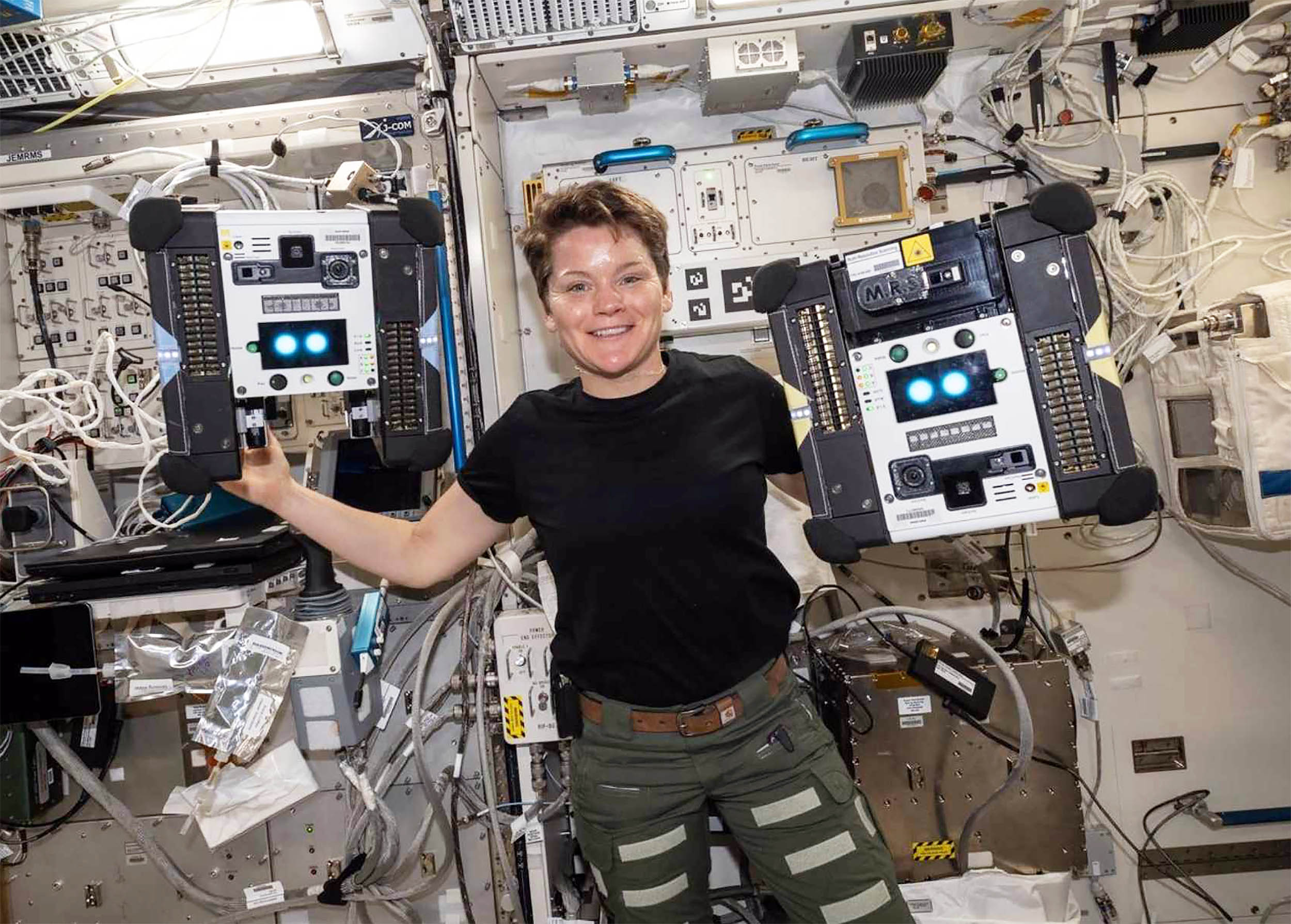Patients with cancer who received mRNA-based COVID vaccines within 100 days of starting immune checkpoint therapy were twice as likely to be alive three years after beginning treatment, according to a new study led by researchers at…
Author: admin
-

Strategies for Enhancing Anticoagulation Adherence in Adult Patients A
Introduction
Valvular Heart Disease (VHD) is a group of organic disorders characterized by structural or functional abnormalities of the heart valves, leading to valvular stenosis or regurgitation, which subsequently affects intracardiac…
Continue Reading
-

Bryan Bros eager to ‘globalize game’ with content from International Series Philippines
MANILA, Philippines – The Bryan Bros are one of the biggest and best known brands in online golf content, and the American brothers are eager to use their channel to shine the spotlight on The International Series and the Asian Tour this week as…
Continue Reading
-

Experts talk on developing the isotope supply chain — ANS / Nuclear Newswire
The big picture: Paul Dickman, president of the World Council on Isotopes and chair of the ANS External Affairs Committee, moderated the event. After introducing the speakers, he kicked off the discussion by taking a broad look at why isotopes matter and why their supply chain is imperiled.
“Every modern society depends on isotopes, often without really realizing it. [Isotopes] sterilize 40 percent of all single-use medical devices, power diagnostic imaging, initiate nuclear reactor startups, and ensure the integrity of aircraft and turbine components. Yet this critical global system is fragile and growingly dependent on foreign sources,” he said.
In many cases, single facilities, or single nations, represent the majority of global production—leaving the world exposed to cascading shortages. The list of isotopes with vulnerable supply chains includes but is not limited to molybdenum-99, lutetium-177, actinium-225, iodine-131, iridium-192, and yttrium-90.
While each vulnerable isotope presents a unique set of challenges, much of the webinar focused on the supply chains of cobalt-60 and californium-252 as two contrasting case studies shedding light on the industry’s broader issues.
Cobalt-60: Co-60 is used for cancer therapy and sterilizing medical equipment. It is primarily produced in Canada, Russia, and China, with India and Argentina also producing part of the total global supply. Among those five countries, 20 reactors are producing Co-60—all but one of which are power reactors. So, there exists both “a diversity of supply and a highly reliable network in terms of uptime” which puts the Co-60 supply chain in a relatively healthy place, according to Richard Weins, director of business development and strategic supply at Nordion, a major radioisotope supply company.
Weins added that the positive change for Co-60 in the past two years contrasts a five-year period of relative difficulty. According to him, a reduction in Russian supply combined with an unexpected increase in demand led to increasing supply chain fragility.
These rapid changes, to Weins, reflect one of the key issues in bolstering supply chains: predictability. Development becomes more difficult to justify when investors don’t know if demand will grow by 1 percent or 10 percent in the near future—especially considering the long lead time and capital intensity that development projects require.
Californium-252: Ca-252 is a neutron emitter vital for reactor startups, neutron radiography, and oil exploration. In sharp contrast to Co-60, Ca-252 is produced in only two reactors in the world, both of which are research reactors. According to Samantha Schrell, a program manager at Oak Ridge National Laboratory, those reactors are the High Flux Isotope Reactor (HFIR) at ORNL and Russia’s SM-3.
That small number of facilities is only one of many challenges that the Ca-252 supply chain faces. Schrell explained that Ca-252 needs a heavy feedstock, such as curium, which is itself a precious radioisotope with a limited supply. Demand is also increasing, thanks in part to the proliferation of new reactor startups, programs, and projects.
Schrell added that the already precarious supply chain for Ca-252 was put under further stress by the Russia-Ukraine war, an event that has introduced issues to the supply chains of many radioisotopes.
Go deeper: To learn more about the current state of the isotope supply chain and the path forward, watch the full webinar, which features further commentary from Steven Biegalski of Georgia Tech and Anikitos Garofalakis of OECD Nuclear Energy Agency.
Continue Reading
-

The Future of Discovery: Science News Spotlights Scientists
WASHINGTON, Oct. 22, 2025 (GLOBE NEWSWIRE) — For the past nine years, Science News has celebrated early-career scientists tackling some of today’s biggest challenges. The Science News’ Scientists to Watch 2025 list highlights five early-…
Continue Reading
-

Pakistani Cricketer Aamir Jamal Mourns Loss Of Newborn Daughter; Fans & Players Offer Condolences
Pakistani cricketer Aamir Jamal shared a heartbreaking post on X, announcing the death of his newborn daughter. Expressing his grief, he wrote, “From Allah, to Allah. I couldn’t hold you longer my lil Angel. Baba & mama will miss you….
Continue Reading
-

Data from REZOLVE-AD Phase 2b Study for Rezpegaldesleukin Accepted for Late-Breaking Oral Abstract Presentation at ACAAI 2025 Annual Scientific Meeting
SAN FRANCISCO, Oct. 22, 2025 /PRNewswire/ — Nektar Therapeutics (Nasdaq: NKTR) announced today that new data from the ongoing REZOLVE-AD Phase 2b study of rezpegaldesleukin, an IL-2 pathway agonist and regulatory T-cell (Treg) proliferator, in atopic dermatitis has been accepted for a late-breaking oral abstract presentation at the American College of Allergy, Asthma & Immunology (ACAAI) 2025 Annual Scientific Meeting. The meeting will be held in Orlando, USA, from November 6 to 10, 2025.
Details of the presentation at ACAAI are as follows:
- Abstract ID: 7005
- Oral Presentation: “Rezpegaldesleukin Novel Treg-Inducing Therapy Demonstrates Efficacy in Atopic Dermatitis and Asthma in Phase 2b Trial”
- Presenter: Jonathan Corren, MD
- Session Title: Distinguished Industry & Late-breaking Oral Abstracts – Session 2
- Presentation Date and Time: Saturday, November 8, 2025 at 5:33 PM ET
- Location: Room W231
The presentation will be available on Nektar’s website at http://www.nektar.com under Scientific Publications, following the formal presentation.
About REZOLVE-AD Phase 2b Study
The ongoing global Phase 2b REZOLVE-AD study (NCT06136741) enrolled 393 patients with moderate-to-severe atopic dermatitis who had not previously received treatment with biologic or JAK inhibitor therapies. Patients were randomized across three different dose regimens of subcutaneous rezpegaldesleukin or placebo for a 16-week induction treatment period. Following this period, rezpegaldesleukin-treated patients who achieved EASI percent score reductions of >50 (EASI-50) were re-randomized (1:1) to continue at the same dose level on a q4w or q12w regimen through study week 52 in a blinded maintenance period.
The primary endpoint of the Phase 2b study is mean improvement in EASI score at the end of the 16-week induction treatment period. Secondary endpoints include the proportion of patients achieving Validated Investigator Global Assessment (vIGA-AD) of 0 or 1, those achieving EASI-75, and those achieving a greater than or equal to a 4-point improvement in Itch Numeric Rating Scale (NRS). Preplanned exploratory endpoints include a full range of translational biomarker measurements and a change in asthma control questionnaire – 5 (ACQ-5) scores for patients with comorbidity of asthma.
This trial was initiated in October 2023 and enrolled patients across approximately 110 sites globally with: 68% enrolled and treated in Europe, including Poland, Bulgaria, Germany, Czech Republic, Spain, Croatia and Hungary; 16% enrolled and treated in the United States; 11% enrolled and treated in Canada; and 5% enrolled and treated in Australia. Patient randomization was stratified based on baseline disease severity measured by vIGA-AD and geographic region. Key enrollment criteria in the study included a minimum EASI score of 16.0, a minimum Body Surface Area (BSA) of 10% and a minimum vIGA-AD of 3.
About Rezpegaldesleukin
Autoimmune and inflammatory diseases cause the immune system to mistakenly attack and damage healthy cells in a person’s body. A failure of the body’s self-tolerance mechanisms enables the formation of the pathogenic T lymphocytes that conduct this attack. Rezpegaldesleukin is a potential first-in-class resolution therapeutic that may address this underlying immune system imbalance in people with many autoimmune and inflammatory conditions. It targets the interleukin-2 receptor complex in the body to stimulate proliferation of immune-modulating cells known as regulatory T cells. By activating these cells, rezpegaldesleukin may act to bring the immune system back into balance.
In February 2025, the U.S. Food and Drug Administration (FDA) granted Fast Track designation for rezpegaldesleukin for the treatment of adult and pediatric patients 12 years of age and older with moderate-to-severe atopic dermatitis whose disease is not adequately controlled with topical prescription therapies or when those therapies are not advisable. In July 2025, the FDA granted Fast Track designation for rezpegaldesleukin for the treatment of severe alopecia areata (AA) in adults and pediatric patients 12 years of age and older who weigh at least 40 kg.
Rezpegaldesleukin is being developed as a self-administered injection for a number of autoimmune and inflammatory diseases. It is wholly owned by Nektar Therapeutics.
About Atopic Dermatitis
Atopic dermatitis is the most common type of eczema, affecting approximately 30 million people in the United States.1 AD is characterized by a defect in the skin barrier, which allows allergens and other irritants to enter the skin, leading to an immune reaction and inflammation.
About Nektar Therapeutics
Nektar Therapeutics is a clinical-stage biotechnology company focused on developing treatments that address the underlying immunological dysfunction in autoimmune and chronic inflammatory diseases. Nektar’s lead product candidate, rezpegaldesleukin (REZPEG, or NKTR-358), is a novel, first-in-class regulatory T cell stimulator being evaluated in three Phase 2b clinical trials, one in atopic dermatitis, one in alopecia areata, and one in Type 1 diabetes mellitus. Nektar’s pipeline also includes a preclinical bivalent tumor necrosis factor receptor type II (TNFR2) antibody and bispecific programs, NKTR-0165 and NKTR-0166, and a modified hematopoietic colony stimulating factor (CSF) protein, NKTR-422. Nektar, together with various partners, is also evaluating NKTR-255, an investigational IL-15 receptor agonist designed to boost the immune system’s natural ability to fight cancer, in several ongoing clinical trials.
Nektar is headquartered in San Francisco, California. For further information, visit www.nektar.com and follow us on LinkedIn.
Cautionary Note Regarding Forward-Looking Statements
This press release contains forward-looking statements which can be identified by words such as: “will,” “develop,” “potential,” “target,” “address,” “may” and similar references to future periods. Examples of forward-looking statements include, among others, statements regarding the therapeutic potential of, and future development plans for, rezpegaldesleukin, NKTR-0165, NKTR-0166, NKTR-422, and NKTR-255. Forward-looking statements are neither historical facts nor assurances of future performance. Instead, they are based only on our current beliefs, expectations and assumptions regarding the future of our business, future plans and strategies, anticipated events and trends, the economy and other future conditions. Because forward-looking statements relate to the future, they are subject to inherent uncertainties, risks and changes in circumstances that are difficult to predict and many of which are outside of our control. Our actual results may differ materially from those indicated in the forward-looking statements. Therefore, you should not rely on any of these forward-looking statements. Important factors that could cause our actual results to differ materially from those indicated in the forward-looking statements include, among others: (i) our statements regarding the therapeutic potential of rezpegaldesleukin, NKTR-0165, NKTR-0166, NKTR-422 and NKTR-255 are based on preclinical and clinical findings and observations and are subject to change as research and development continue; (ii) rezpegaldesleukin, NKTR-0165, NKTR-0166, NKTR-422 and NKTR-255 are investigational agents and continued research and development for these drug candidates is subject to substantial risks, including negative safety and efficacy findings in future clinical studies (notwithstanding positive findings in earlier preclinical and clinical studies); (iii) rezpegaldesleukin, NKTR-0165, NKTR-0166, NKTR-422 and NKTR-255 are in clinical development and the risk of failure is high and can unexpectedly occur at any stage prior to regulatory approval; (iv) data reported from ongoing clinical trials are necessarily interim data only and the final results will change based on continuing observations; (v) the timing of the commencement or end of clinical trials and the availability of clinical data may be delayed or unsuccessful due to regulatory delays, slower than anticipated patient enrollment, manufacturing challenges, changing standards of care, evolving regulatory requirements, clinical trial design, clinical outcomes, competitive factors, or delay or failure in ultimately obtaining regulatory approval in one or more important markets; (vi) a Fast Track designation does not increase the likelihood that rezpegaldesleukin will receive marketing approval in the United States; (vii) patents may not issue from our patent applications for our drug candidates, patents that have issued may not be enforceable, or additional intellectual property licenses from third parties may be required; and (viii) certain other important risks and uncertainties set forth in our Quarterly Report on Form 10-Q filed with the Securities and Exchange Commission on August 8, 2025. Any forward-looking statement made by us in this press release is based only on information currently available to us and speaks only as of the date on which it is made. We undertake no obligation to update any forward-looking statement, whether written or oral, that may be made from time to time, whether as a result of new information, future developments or otherwise.
Contacts:
For Investors:
Vivian Wu
[email protected]Corey Davis, Ph.D.
LifeSci Advisors, LLC
[email protected]
212-915-2577Ahu Demir, Ph.D.
LifeSci Advisors, LLC
[email protected]
212-915-3820For Media:
Jonathan Pappas
LifeSci Communications
857-205-4403
[email protected]1. Eczema stats. National Eczema Association (2022, September 27). https://nationaleczema.org/research/eczema-facts/
SOURCE Nektar Therapeutics
Continue Reading
-

Satellites watch glaciers melting in Patagonia photo of the day for Oct. 22, 2025
For decades, satellites orbiting hundreds of miles above Earth have provided scientists with a crucial vantage point to monitor our planet’s frozen landscapes. Missions like NASA’s Landsat and the European Space Agency‘s Copernicus Sentinel are…
Continue Reading
-

BBC Sets Laura Linney, Rhys Ifans Parkinson’s Film ‘But When We Dance’
Emmy and Golden Globe award-winning Laura Linney (Ozark, Love Actually, John Adams) and BAFTA award winner Rhys Ifans (Inheritance, Venom: The Last Dance, House of the Dragon) will star in the BBC film But When We Dance, “a touching story…
Continue Reading
-

Astrobee: autonomous assistants floating alongside astronauts
Robots that float, watch, and help keep a spaceship running are no longer science fiction. NASA’s Astrobee robots glide through the International Space Station using quiet fan thrusters, cameras, and smart software to handle chores that do not…
Continue Reading
